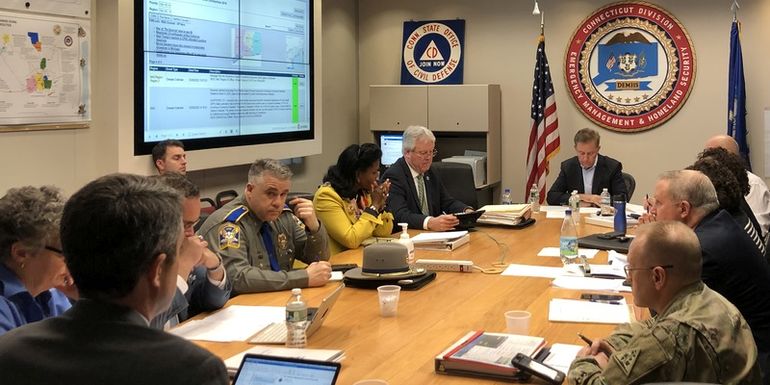Processing Your Payment
Please do not leave this page until complete. This can take a few moments.
-
News
-
Editions
-
- Lists
-
Viewpoints
-
HBJ Events
-
Event Info
- 2024 Economic Outlook Webinar Presented by: NBT Bank
- Best Places to Work in Connecticut 2024
- Top 25 Women In Business Awards 2024
- Connecticut's Family Business Awards 2024
- What's Your Story? A Small Business Giveaway 2024 Presented By: Torrington Savings Bank
- 40 Under Forty Awards 2024
- C-Suite and Lifetime Achievement Awards 2024
- Connecticut's Health Care Heroes Awards 2024
-
-
Business Calendar
-
Custom Content
- News
-
Editions
View Digital Editions
Biweekly Issues
- April 29, 2024
- April 15, 2024
- April 1, 2024
- March 18, 2024
- March 4, 2024
- February 19, 2024
- February 5, 2024
- January 22, 2024
- January 8, 2024
- + More
Special Editions
- Lists
- Viewpoints
-
HBJ Events
Event Info
- View all Events
- 2024 Economic Outlook Webinar Presented by: NBT Bank
- Best Places to Work in Connecticut 2024
- Top 25 Women In Business Awards 2024
- Connecticut's Family Business Awards 2024
- What's Your Story? A Small Business Giveaway 2024 Presented By: Torrington Savings Bank
- 40 Under Forty Awards 2024
- C-Suite and Lifetime Achievement Awards 2024
- Connecticut's Health Care Heroes Awards 2024
Award Honorees
- Business Calendar
- Custom Content
Lamont rewrites emergency-response playbook
 Photo | Gov. Ned Lamont's office
Early in the crisis, Gov. Ned Lamont meets with his staff at the state’s Emergency Operations Center.
Photo | Gov. Ned Lamont's office
Early in the crisis, Gov. Ned Lamont meets with his staff at the state’s Emergency Operations Center.
The state Emergency Operations Center is safely tucked behind the thick stone walls of the State Armory in Hartford. With reliable power and communications, it’s been a good place to manage Connecticut’s responses to blizzards and blackouts. But not the novel coronavirus, COVID-19.
The EOC is close quarters. Work stations with phones and monitors connect to the outside world. Behind plate glass, the main conference room is called the fish bowl. Governors typically sit at the head of a long table, key state employees arrayed on either side, elbow to elbow. Not any more.
The fishbowl is empty.
“We may transmit [the disease] to each other, so I kicked out, evicted, quite a few people and we went virtual. Everything we’re trying to do is virtual,” said James Rovella, who oversees the Emergency Operations Center as the commissioner of emergency services and public protection. The emergency is now being managed largely by telephone, email and video conference, and the few who go into the EOC have their temperature checked upon arrival.
In ways large and small, Gov. Ned Lamont and his administration are adapting to an emergency unlike any other, whether measured by scope, duration or, most likely, ultimate cost to the state and its economy.
Since declaring a public-health emergency on March 10, Lamont has issued 11 executive orders, most imposing unprecedented restrictions on commerce and social life: Bans on visitors to nursing homes and hospitals, and the closure of schools, shopping malls, theaters, bars and restaurants, town halls and many state offices and courthouses.
“This crisis touches every corner of society, of our economy, of our daily life. And each day we are presented with new challenges associated with those different aspects,” said Josh Geballe, the governor’s chief operating officer. “It’s our job as state government to find ways to either prepare, to provide relief, or to support. No two days are alike.”
Confirmed cases in Connecticut spiked dramatically Sunday, jumping from 223 to 327. The state now has eight COVID-19 deaths.
Near the epicenter
The epicenter of the pandemic is on Connecticut’s doorstep: New York reported 15,168 cases, a one-third jump over the previous day, with 1,873 cases in Westchester County and 9,045 in New York City. Gov. Andrew Cuomo announced plans to open four temporary hospitals, including one at the Jacob Javits Center on the city’s West Side.
Connecticut’s government is operating under a national emergency template, one organized around 15 Emergency Support Functions, or ESFs. They include functions like transportation, communications, public works, search and rescue, energy and homeland security. State agencies and relevant NGOs, or non-governmental organizations, are assigned to each ESF.
ESF 8 is public health, naturally the focus now. But two others geared to preserving the social safety net and saving jobs are expected to eventually have equal billing.
“The state has the most muscle memory for this framework, especially for hurricanes and snow storms. We have had to customize it somewhat for the very unique shape of this crisis,” Geballe said. “In a hurricane, there’s a lot of action in public works, in search and rescue. But in this particular crisis, there is a tremendous amount of focus in mass care, ESF 6, and ESF 15, long-term recovery and mitigation.”
Dierdre Gifford, the commissioner of social services, is overseeing ESF 6, a function that makes her responsible for overseeing the safety net. David Lehman, the commissioner of economic and community development, is spearheading ESF 14, giving him charge over ways the administration is trying to mitigate damage to the economy, then help its recovery.
“These other two, we put on steroids,” Geballe said.
A reappraisal
The crisis has invited a reappraisal of Lamont, who struggled badly in his first year to navigate the politics of the General Assembly, failing to win passage of his priority issue — increasing financing of transportation infrastructure with some form of highway tolls. He gave up on passage in January.
One of the knocks against Lamont was that his natural tendency to seek consensus undermined his ability to cope with conflict.
If that was a weakness during the 2019 legislation session, it’s been a strength in recent weeks. Lamont has worked cooperatively with New York and New Jersey on a uniform approach to closures of schools and commerce, and municipal officials say his legal staff has worked well with them before issuing executive orders.
“I think his approach to governing fits this situation,” said Paul Mounds, his chief of staff. “His governing style fits this moment, very much so.”
Mounds said the governor was responsible for a change Sunday in how the state is presenting its COVD-19 data: He insisted on a breakdown by age, an effort to discourage Connecticut residents from thinking the coronavirus only infected older people.
With the departure of his first chief of staff, Lamont installed a new team on Feb. 27: Mounds, a political insider who had been the deputy, as new chief of staff; Geballe, the commissioner of administrative services, took on the added job of chief operating officer. He now is coordinating the inter-agency response to the virus.
Mounds’ first task was to negotiate passage of a bond package on March 11, the last day the Capitol was open to the public. Since then, Mounds said, there is no agenda other than COVID-19.
Geballe said they knew the pandemic eventually would dominate their new jobs. The first case in the U.S. was diagnosed Jan. 20 in Seattle, and the governor’s staff had their first briefing that same month.
“We knew it was coming here. And we knew that our first months in this job would be quite unusual,” Geballe said.
Connecticut was one of the states to participate in August in a national drill assuming a flu pandemic with 2.1 million cases and 14,000 deaths. (According to the New York Times, the drill was one of several run during the year that produced a scathing assessment in October of the federal government’s lack of preparedness for a pandemic.)
One of the challenges dramatically clear now, but not apparent during the drill, was how the closure of schools and day care centers would hamper doctors, nurses and other first responders with young children, said Av Harris, a spokesman for the Department of Public Health.
Rovella said the impact on the state’s email’s system of having thousands of employees work from home also was unanticipated.
“Those are two things that are becoming really, really important,” said Harris, speaking from home. The state epidemiologist, Matthew Cartter, ordered him to self-quarantine for 14 days after Harris said his two-year-old daughter was running a fever. She seems fine, Harris said.
At the outset of the COVID-19 emergency, the governor’s staff grew uncomfortable seeing Lamont conduct daily briefings from the EOC’s media room, often surrounded by key administration officials. It undercut one of his messages: Everyone should tele-commute; when possible; and keep at least six feet away from others.
“We have to practice what we preach,” Rovella said. “It’s as easy as that.”
The governor switched from the media room to outdoor briefings at the Executive Residence and State Capitol. His new indoor briefing room is the cavernous drill shed at the Armory, where social distancing can be enforced.
On Sunday, most households in Connecticut got a recorded phone call from the governor, urging them to stay home — and acknowledging that his executive orders restricted life in Connecticut, but did not lock it down.
“I’m calling to urge you personally: Stay safe, stay home. I’m not ordering you to stay home, I’m strongly urging you to stay home to make sure your and your neighbors are much less likely to be infected by the highly contagious COVID-19 virus,” Lamont said. “If you must head out to the grocery store, or pharmacy, pick up takeout from your favorite restaurant, that’s fine.”

2022 Giving Guide
This special edition informs and connects businesses with nonprofit organizations that are aligned with what they care about. Each nonprofit profile provides a crisp snapshot of the organization’s mission, goals, area of service, giving and volunteer opportunities and board leadership.
Learn more
Subscribe
Hartford Business Journal provides the top coverage of news, trends, data, politics and personalities of the area’s business community. Get the news and information you need from the award-winning writers at HBJ. Don’t miss out - subscribe today.
Subscribe
2024 Book of Lists
Delivering Vital Marketplace Content and Context to Senior Decision Makers Throughout Greater Hartford and the State ... All Year Long!
Read Here-
2022 Giving Guide
This special edition informs and connects businesses with nonprofit organizations that are aligned with what they care about. Each nonprofit profile provides a crisp snapshot of the organization’s mission, goals, area of service, giving and volunteer opportunities and board leadership.
-
Subscribe
Hartford Business Journal provides the top coverage of news, trends, data, politics and personalities of the area’s business community. Get the news and information you need from the award-winning writers at HBJ. Don’t miss out - subscribe today.
-
2024 Book of Lists
Delivering Vital Marketplace Content and Context to Senior Decision Makers Throughout Greater Hartford and the State ... All Year Long!
ABOUT
ADVERTISE
NEW ENGLAND BUSINESS MEDIA SITES
No articles left
Get access now
In order to use this feature, we need some information from you. You can also login or register for a free account.
By clicking submit you are agreeing to our cookie usage and Privacy Policy
Already have an account? Login
Already have an account? Login
Want to create an account? Register
Get access now
In order to use this feature, we need some information from you. You can also login or register for a free account.
By clicking submit you are agreeing to our cookie usage and Privacy Policy
Already have an account? Login
Already have an account? Login
Want to create an account? Register






0 Comments